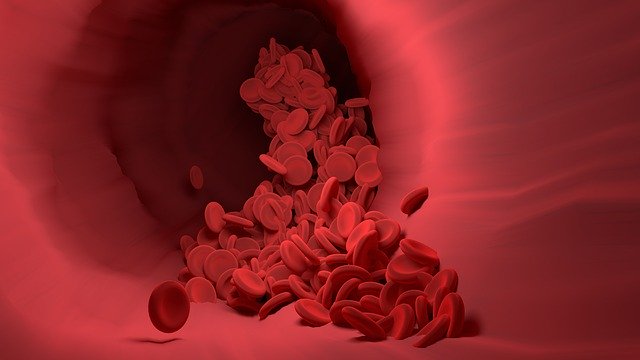Direct-acting oral anticoagulants (DOACs; also called NOACs – novel oral anticoagulants) are an increasingly popular alternative to warfarin. Meanwhile, the number of obese patients requiring anticoagulation is also increasing. Because the landmark studies that established safety and efficacy for these agents specifically excluded patients with BMI ≥ 40 kg/m2 or weight > 120 kg, there is currently a dearth of hard evidence for the use of DOACs in obesity.
This is what led the International Society for Thrombosis and Haemostasis (ISTH) to recommend against the use of DOACs in patients who are obese in their 2016 guidelines.
To the date of this being published, others, such as the CHEST guidelines for VTE and ACC/AHA guidelines for atrial fibrillation do not provide any specific guidance with regard to DOACs in obesity. To help shed some light on this topic, many retrospective studies and meta-analyses have isolated data for overweight and obese patients taking DOACs and have found similar results to that of lower weight populations. In these studies, DOACs have been as effective at preventing thrombotic events as warfarin (or better) and generally less likely to cause serious bleeding events. However, it is still considered a clinical gray area because of the lack of gold-standard data.
There are many reasons patients and providers might find DOACs in obesity to be a more appealing option than warfarin.
First, DOACs require much less intensive monitoring. For patients on warfarin, the frequent INR checks can be time-consuming and tiresome. DOACs do not require such frequent monitoring to ensure adequate anticoagulation, rather their doses are standardized, generally based on the indication. Because of the standardized dosing, regimens are much simpler with DOACs than with warfarin.
The drug-food interactions with vitamin K-containing vegetables that plague patients on warfarin are not an issue with DOACs, but they do have some significant drug-drug interactions that should be evaluated on a patient-by-patient basis. If looking for more on drug-food interactions, check out my most recent book.
Conversely, many patients and providers may prefer to stick with warfarin specifically because of its well known and well-established safety and efficacy in many different patient populations. In the event of a serious bleed, warfarin is more easily reversed than a DOAC. (Andexxa and Praxbind, the DOAC reversal agents, are much more expensive than vitamin K and may not be available at every facility.) As cumbersome as INR checks may be, that ability to individualize regimens does allow patients and providers to be certain of adequate anticoagulation. Patient adherence is also easily monitored, as frequently missed doses can be spotted in INR checks, something that is not as easily done with a DOAC.
Virtually all of the currently available (limited) literature on DOACs in obesity points to tolerability and efficacy but we are lacking randomized, controlled trials for DOACs in this patient population. Until they happen, this will likely still be considered a bit of a gray area and a clinical judgment call. Patients who are well-established on warfarin who do not have any complaints about getting their INR checked may be better off continuing therapy, but all available evidence seems to indicate that a DOAC would be a reasonable option, regardless of BMI.
When a condition (obesity) is modifiable and you have to make a decision on using a DOAC or warfarin, it may also be a good time to educate the patient about the risks of obesity to their health. Maybe…just maybe this would be one more risk that may push them toward a healthier weight.
References:
January CT, Wann LS, Calkins H, et al. 2019 AHA/ACC/HRS Focused update of the 2014 AHA/ACC/HRS guideline for the management of patients with atrial fibrillation: A report of the American College of Cardiology/American Heart Association Task Force on Clinical Practice Guidelines and the Heart Rhythm Society. Journal of American College of Cardiology. 2019.
Martin K, Beyer-Westendorf J, Davidson BL, Huisman MV, Sandset PM, Moll S. Use of the direct oral anticoagulants in obese patients: guidance from the SSC of the ISTH. Journal of Thrombosis and Haemostasis, 14. 2016.
Kearon C, Akl EA, Ornelas J. et al. Antithrombotic therapy for VTE disease: CHEST guideline and expert panel report. Evidence-based Medicine, 149. 2016.
Choi Y, Kushnir M, and Heisler Billet H. Apixaban is safe and effective in morbidly obese patients: A retrospective analysis of 390 patients with BMI ≥ 40. Blood, 130. 2017.
Kido K and Ngorsuraches S. Comparing the efficacy and safety of Direct Oral Anticoagulants with warfarin in the morbidly obese population with atrial fibrillation. Annals of Pharmacotherapy, 53. 2018.
Aloi KG, Fierro JJ, Stein BJ et al. Investigation of direct-acting oral anticoagulants ant the incidence of venous thromboembolism in patients weighing ≥120kg compared to patients weighing <120kg. Journal of Pharmacy Practice. 2019.
Zhou Y, Ma J, and Zhu W. Efficacy and safety of direct oral anticoagulants versus warfarin in patients with atrial fibrillation across BMI categories: A systematic review and meta-analysis. American Journal of
Cardiovascular Drugs, 20. 2020.
Moore KT, Kroll D. Influences of obesity and bariatric surgery on the clinical and pharmacologic profile of rivaroxaban. The American Journal of Medicine, 130. 2017.
Ihaddadene R, and Carrier M. The use of anticoagulants for the treatment and prevention of venous thromboembolism in obese patients: Implications for safety. Expert Opinion on Drug Safety, 15. 2016.
Netley J, Howard K, and Wilson W. Effects of body mass index on the safety and effectiveness of direct oral anticoagulants: A retrospective review. Journal of Thrombosis and Thrombolysis, 48. 2019.
Zukkoor S. Antiarrhythmic and DOAC dosing in obesity. American College of Cardiology. https://www.acc.org/latest-in -cardiology/articles/2019/07/03/08/22/antiarrhythmic-and-doac-dosing-in-obesity#:~:text=Evidence%20from%20the%20pivotal%20trials,%E2%89%A540%20kg%2Fm2.



0 Comments